Are you struggling to find a reliable manufacturing partner for your adult brand? The thought of navigating a massive international trade show can be overwhelming, and you can’t afford to waste time or choose the wrong supplier. This guide will give you the strategy you need for success.
Yes, the Asia Adult Expo is a crucial event for Western brands. It allows you to meet numerous manufacturers face-to-face, inspect product quality firsthand, and build personal relationships that are vital for long-term partnerships. Attending with a structured plan for preparation, vetting, and follow-up is the key to finding a reliable partner who can help your brand grow.
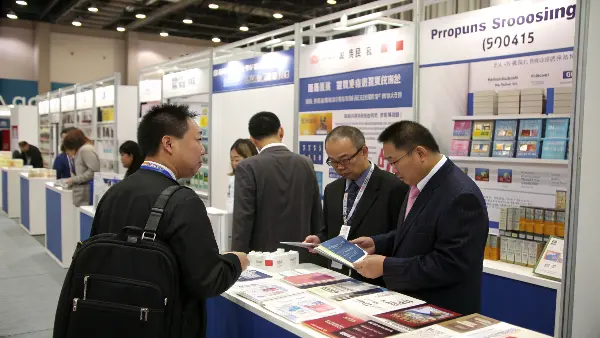
I’ve walked the floors of these expos for years, first as a wide-eyed newcomer and now as a manufacturer myself with PrivyPlay. I’ve seen brands make huge breakthroughs and others leave disappointed. The difference always comes down to preparation and knowing what to look for. Let’s break down exactly how you can make this trip a massive success for your brand. It all starts with understanding why this event can be a game-changer.
Why Should Your Adult Brand Even Attend the Asia Adult Expo?
Your inbox is full of emails from potential suppliers, and video calls seem efficient. Is a long, expensive trip to Asia really necessary? You’re spending a lot of money and time on a trip that might not pay off, wondering if you could just find the same partners online.
Attending the Asia Adult Expo allows you to compress months of online research into just a few days. You can physically touch and test products, gauge a manufacturer’s professionalism in person, and compare dozens of potential partners side-by-side. This direct interaction builds trust and uncovers opportunities you would miss online.
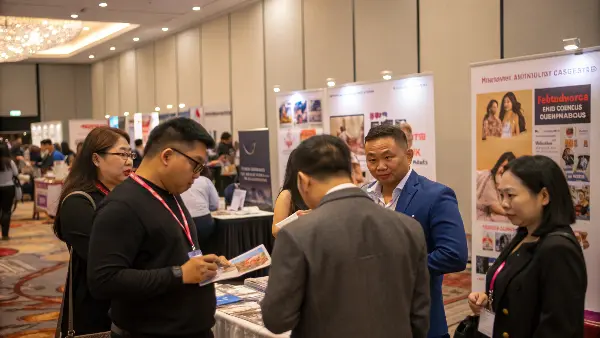
The value of attending in person goes far beyond just looking at products. It’s about efficiency and human connection. An email can’t convey the quality of a silicone finish or the feel of a motor’s vibration. A video call won’t show you the nervous shuffle of a sales manager who can’t answer a direct question about material certifications. I remember one year I was considering a new supplier online. Their website was slick and their prices were good. But at the expo, their booth was messy, the product samples felt cheap, and the staff seemed completely uninterested. I saved myself a huge headache by being there.
The In-Person Advantage
Meeting face-to-face is about building a real relationship. In this business, your manufacturer is your partner. You need to trust them with your brand’s reputation. Shaking a hand and looking someone in the eye creates a level of accountability that digital communication can’t match. It’s also your chance to discover the unexpected. You might go looking for a specific type of vibrator but discover a manufacturer with a groundbreaking new material or a unique design that inspires your next bestseller. This ‘accidental discovery’ is one of the most powerful reasons to walk the floor.
Understanding Market Trends
Another key benefit is seeing the entire market landscape at once.
- What new technologies are emerging?
- What designs are competitors pushing?
- What colors and materials are trending?
You get a powerful snapshot of where the industry is heading. This helps you make smarter decisions about your own product development, ensuring your brand stays relevant and competitive.
How Do You Prepare for the Expo to Maximize Your Time?
You’ve booked your ticket and hotel, but now what? Arriving without a plan is a recipe for disaster. You’ll end up wandering aimlessly, collecting random business cards, and leaving more confused than when you arrived. You need a strategy to make every minute count.
To maximize your time, you must prepare weeks in advance. Research the exhibitor list and pre-schedule meetings with your top 5-10 potential partners. Prepare a detailed "Request for Quotation" (RFQ) document with your product specs and a list of specific questions about MOQs, lead times, and certifications.
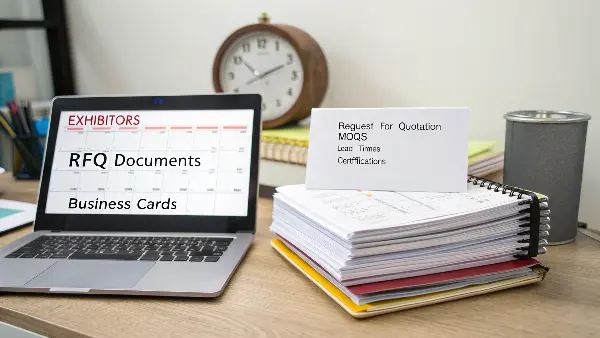
Effective preparation is the single biggest factor for success. Don’t just show up and hope for the best. Long before you board the plane, you should be doing your homework. Most expos publish an exhibitor list on their website weeks or even months in advance. Go through that list and identify companies that seem like a good fit for your brand’s needs. Look at their websites and product categories. I always create a tiered list: "Must Meet," "Good to Meet," and "If Time Allows."
Your Pre-Expo Checklist
With your target list ready, it’s time to be proactive. Reach out to your "Must Meet" contacts and schedule appointments. This shows you are a serious buyer and guarantees you dedicated time with a key decision-maker, not just a random booth attendant.
Here’s a simple checklist to guide you:
| Preparation Task | Details and Goal |
|---|---|
| Research Exhibitors | Create a tiered list of 15-20 potential suppliers based on their online presence and product focus. |
| Schedule Meetings | Email your top 5-10 targets to book specific meeting times. This is non-negotiable for serious vetting. |
| Prepare Your RFQ | Create a document with product specs, target costs, material requirements, and packaging needs. |
| Create a Question List | Write down specific questions about MOQ, lead times, quality control processes, and certifications (CE, RoHS). |
| Pack a "Meeting Kit" | Bring your RFQ, question list, plenty of business cards, and a notebook for taking detailed notes. |
Having all this prepared allows you to walk into each meeting with confidence. You control the conversation and make sure you get all the information you need to make an informed decision later.
What Red Flags Should You Look For When Vetting Manufacturers?
The expo floor is full of impressive booths and friendly salespeople. It’s easy to get swept up in the excitement and promises. But a flashy booth doesn’t guarantee a reliable partner. You need to know how to spot the warning signs that could signal future problems.
Key red flags include vague answers to specific questions about materials or certifications, an inability to provide client references, and a high-pressure sales approach. Also, be wary of suppliers who can’t clearly explain their quality control process or who offer prices that seem dramatically lower than everyone else’s.
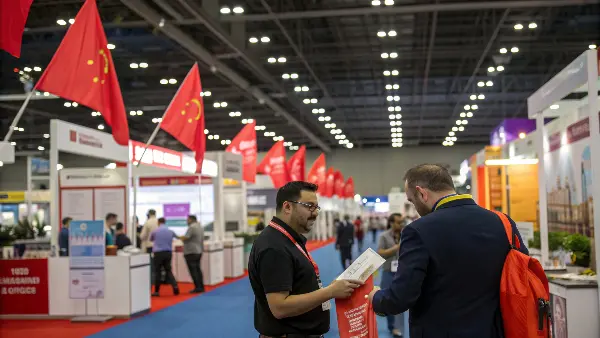
Vetting a potential partner is like being a detective. You need to listen not just to what they say, but how they say it. I once met with a supplier who had a beautiful booth. When I asked about their silicone, they said, "Don’t worry, it’s the best quality." That’s a huge red flag. A good supplier will immediately say, "We use body-safe, platinum-cured silicone and we can provide the MSDS and RoHS testing reports." Specificity is a sign of professionalism; vagueness is a sign of trouble.
The Critical Questions
Probe deeper than surface-level sales pitches. A professional manufacturer will welcome detailed questions because it shows you are a serious and knowledgeable buyer.
- About Their Factory: Ask them to describe their quality control (QC) process. Do they only do a final inspection, or do they have QC checks at multiple stages of production (Incoming Quality Control, In-Process Quality Control, Final Quality Control)? A weak QC process is the number one cause of inconsistent product quality.
- About Their Experience: Ask them about their main markets. If you are a US brand, a supplier who primarily sells to South America might not be familiar with FDA guidelines or US customs requirements. Ask for references from clients in your region. A hesitant or flat-out "no" is a major warning sign.
- About Their Business Practices: Pay attention to their Minimum Order Quantity (MOQ) and pricing. If their MOQ is unusually low or their price is drastically cheaper than competitors, find out why. It could mean they are a trading company, not a factory, or that they cut corners on materials and safety.
Trust your gut. If a conversation feels off or the salesperson is evasive, make a note and move on. There are plenty of other potential partners to meet.
How Can You Effectively Follow Up with Potential Partners After the Expo?
The expo is over, your bags are packed, and you have a stack of business cards. The real work starts now. A weak follow-up strategy can undo all your hard work at the show. You need a systematic approach to turn those initial conversations into a solid partnership.
Follow up within 48 hours of the expo with a personalized email. Remind them of your conversation, re-state your brand’s needs, and attach your detailed RFQ. This immediate action shows you are serious and organized, putting you at the top of their priority list among the hundreds of contacts they made.
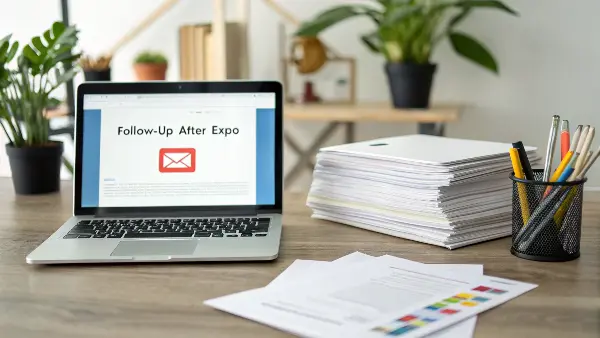
Don’t wait a week to follow up. Manufacturers meet hundreds of people at these shows. You need to stand out while the memory of your conversation is still fresh. I use a simple system. Every night after the expo, I organize the business cards I collected and write a few key notes on the back of each one: "Good communication, strong QC process," or "Vague on materials, follow up on certifications."
The Follow-Up and Vetting Process
Your first follow-up email is crucial. It shouldn’t be a generic template.
Step 1: The Initial Email (Within 48 Hours)
- Subject Line: Make it clear and easy to find, e.g., "Follow-Up: [Your Brand Name] & [Their Company Name] from Asia Adult Expo."
- Personalize It: Mention something specific you discussed. "It was great discussing your new quiet motor technology at your booth on Tuesday."
- State Your Goal: Clearly say you are interested in them as a potential manufacturing partner.
- Attach Your RFQ: Attach the detailed Request for Quotation you prepared earlier. This moves the conversation directly to business.
Step 2: Evaluate their Response
How quickly and professionally do they respond? A fast, detailed reply is a great sign. A slow or incomplete response is a red flag. Their response to your RFQ will tell you a lot about their pricing, capabilities, and attention to detail.
Step 3: Request Samples
Once you’ve narrowed it down to 2-3 serious contenders, request product samples. Never place a bulk order without testing a physical sample first. This is a non-negotiable step to verify the quality you saw at the expo is what they actually produce.
This structured process helps you move from a pile of business cards to a qualified short-list of potential partners efficiently and confidently.
Conclusion
The Asia Adult Expo is more than just a trade show; it’s a strategic opportunity to find the manufacturing partner that will define your brand’s future. By preparing thoroughly, vetting suppliers with a critical eye, and following up systematically, you can navigate the event with confidence and secure a partnership built on trust and quality.
